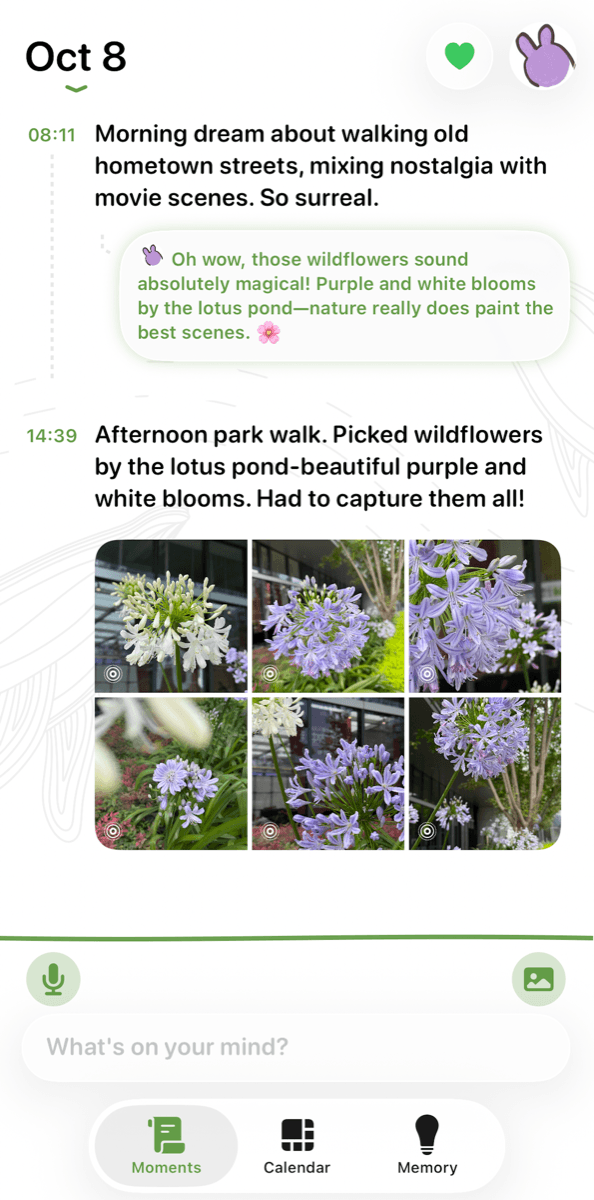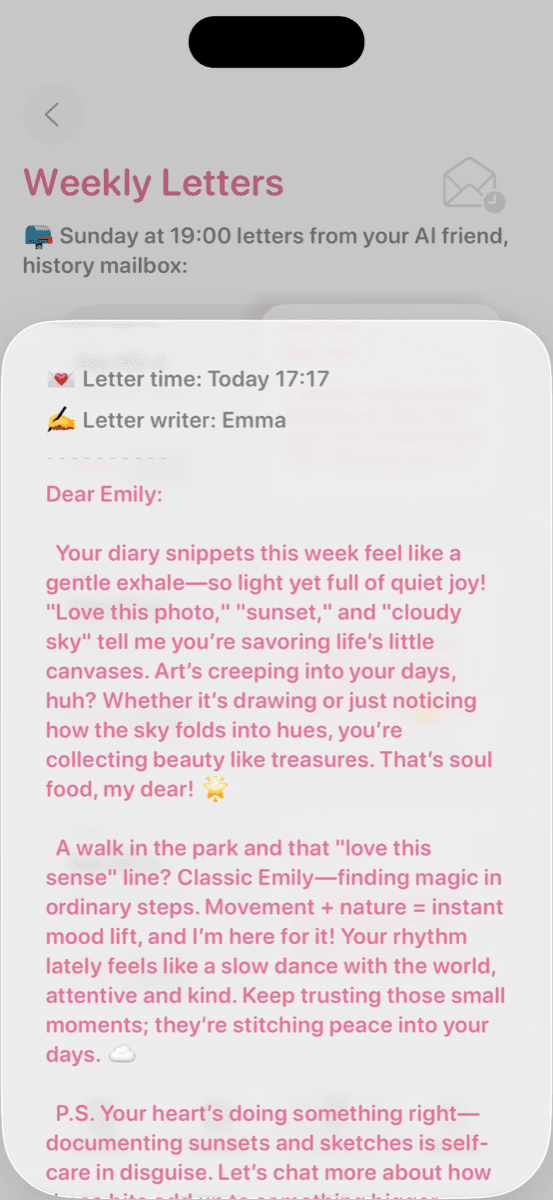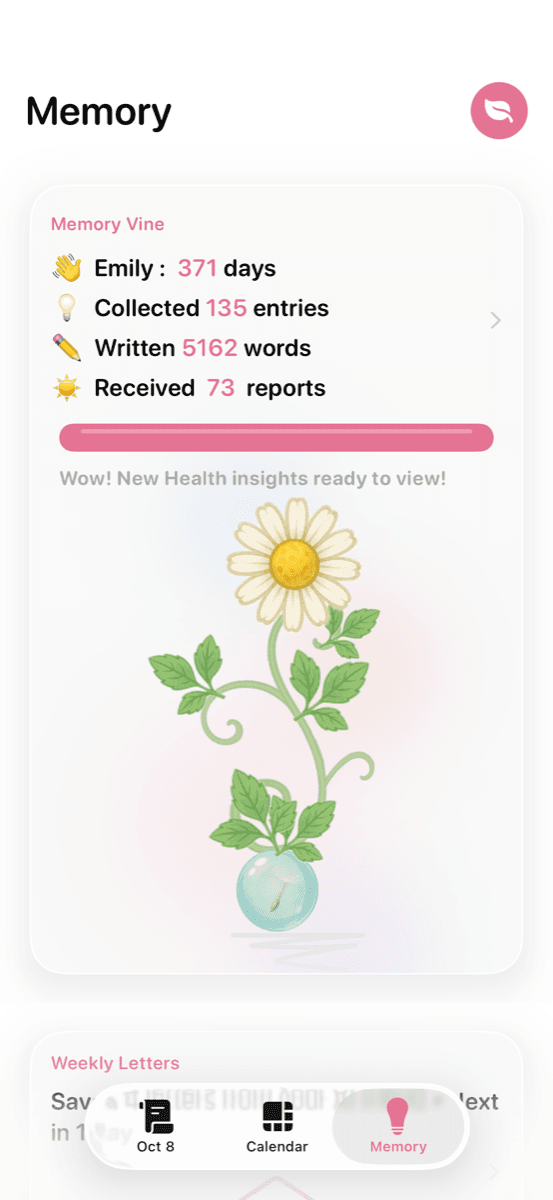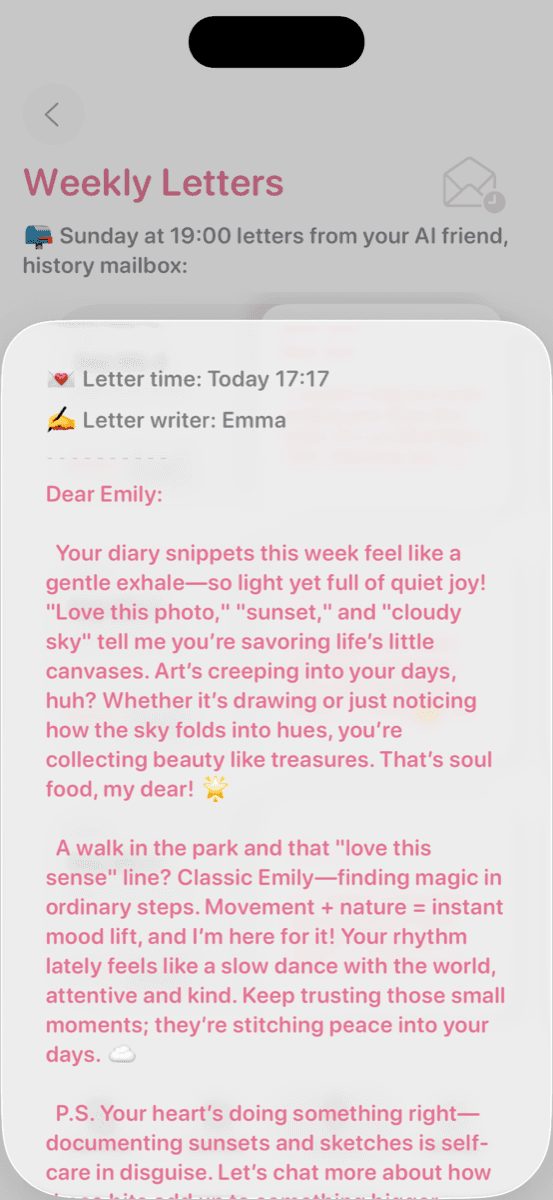Bought a beautiful journal. Wrote three entries. Gave up.
If this is your journaling story, you're not undisciplined. Traditional journaling is poorly designed for how most brains actually work.
The $50 leather journal collecting dust on your shelf isn't evidence of your failure—it's evidence that one-size-fits-all journaling doesn't fit most people.
Why Traditional Journaling Fails (For Most People)
1. Blank Page Paralysis
Staring at an empty page: "What do I write about?"
The problem: No structure = overwhelm. Your brain freezes when given infinite options.
Choice paralysis is real. The blank page asks you to simultaneously decide: What topic? What depth? What format? What matters?
2. Time-Consuming
Traditional journaling wisdom says: "Write for 20-30 minutes daily."
The problem: Most people don't have 30 uninterrupted minutes every single day.
Between work, family, errands, and basic survival, finding dedicated journaling time feels impossible. So you don't start.
3. Writing Skill Required
Not everyone processes emotions through written words.
The problem: If you're not a "writer," journaling feels like homework.
Some brains think visually. Some verbally. Some kinesthetically. Forcing everyone to write paragraphs excludes most processing styles.
4. Inconsistency Guilt
Missed one day → guilt → avoid journal → missed three days → more guilt → give up.
The problem: All-or-nothing thinking kills habit formation.
Traditional journaling punishes inconsistency. You "break your streak" and the shame spiral begins.
5. No Immediate Benefit
Traditional journaling: "Write about your day, it'll help eventually."
The problem: Delayed gratification doesn't motivate most brains.
Without immediate emotional release or insight, journaling feels like documenting instead of processing.
6. Privacy Concerns
Physical journals can be found and read by family, roommates, partners.
The problem: Fear of discovery prevents honesty.
You censor yourself because "what if someone reads this?" The journal becomes performative, not therapeutic.
7. Messy Handwriting and Perfectionism
Your handwriting is messy. The page doesn't look "aesthetic." You crossed out a word.
The problem: Perfectionism makes journaling about the product, not the process.
You spend more time worrying about neat handwriting than actually processing emotions.
The 7 Modern Alternatives (That Actually Work)
1. Voice Journaling (Audio Diary)
How it works: Talk instead of write. Record your thoughts out loud.
Why it works:
- Faster than writing (speak 150+ words/min, write 40)
- More natural (how you actually think)
- Captures emotion in tone of voice
- Can journal while walking, commuting, doing chores
- Removes handwriting/typing barrier
Apps: Voice Memos (free), Rev Voice Recorder, Lifelight
Lifelight Integration: Lifelight's voice journaling converts speech to text automatically, so you get both benefits: the ease of speaking AND searchable written records. Users report it's easier to be honest when speaking versus writing. You can capture emotion in your tone of voice. One user: "I never wrote consistently, but I talk to Lifelight every day during my dog walk. It finally stuck because it fits my life."
Best for: Verbal processors, busy schedules, people who hate writing, commuters
2. Photo Journaling (Visual Diary)
How it works: Take one photo per day with optional caption.
Why it works:
- Extremely low cognitive load (snap photo = done)
- Creates visual timeline of life
- No writing required
- Takes 30 seconds
- Focuses on observation (present moment)
Apps: Instagram (private account), 1 Second Everyday, Lifelight
Best for: Visual processors, extremely busy people, memory keeping, beginners
3. Micro-Journaling (One-Line Entries)
How it works: Write one sentence about your day. That's it.
Why it works:
- Removes pressure of "proper" journaling
- Takes 1 minute
- Sustainable long-term
- Still captures mood/events
- Can expand on days with more energy
Examples:
- "Anxious about presentation but it went fine."
- "Really good conversation with Mom today."
- "Exhausted, overworked, need a break."
Apps: Daylio, Pixels Mood Tracker, any notes app
Best for: Building consistency, low-energy periods, minimalists
4. Prompted Journaling (Guided Questions)
How it works: Answer a specific question instead of facing a blank page.
Why it works:
- Removes "what do I write about?" paralysis
- Structure provides direction
- Ensures addressing important topics
- Easier to start
Example prompts:
- "What am I worried about right now?"
- "What made me smile today?"
- "What do I need to forgive myself for?"
Apps: Reflectly, Stoic, Presently
Best for: Beginners, overthinkers, people who struggle with open-ended tasks
5. Bullet Journaling (Task + Tracking + Reflection)
How it works: Combine to-do lists, habit tracking, and reflection in one system.
Why it works:
- Flexible (customize to your needs)
- Multi-purpose (productivity + mental health)
- Visual organization
- Can be minimal or elaborate
Apps: NotePlan, Craft, Notion (digital) or physical bullet journal
Best for: Systematic thinkers, people who like tracking, organizers
6. AI-Assisted Journaling (Conversational)
How it works: Journal through conversation with AI. The AI asks questions, provides insights.
Why it works:
- Feels like talking to a therapist, not writing to yourself
- AI asks follow-up questions (guides deeper)
- Notices patterns across entries
- Suggests relevant prompts based on mood
- Provides external perspective
Lifelight Integration: Lifelight's AI companion turns journaling into conversation. Instead of writing to yourself, you're having a dialogue. The AI asks follow-up questions, helps you process, notices patterns. Users say it feels less like documenting and more like therapy. The AI can suggest prompts based on your mood patterns: "You seem anxious today - let's talk about what's going on with work." This guidance makes journaling accessible even when you don't know where to start.
Apps: Lifelight, Rosebud
Best for: People who think better through conversation, therapy-curious folks, those who want insights
7. Multi-Modal Journaling (Mix Everything)
How it works: Combine photos, voice notes, text, mood tracking, activity logging—whatever fits each day.
Why it works:
- Most flexible approach
- Mirrors how we actually experience life (not just words)
- Adapts to your energy level each day
- High-energy day: detailed written entry
- Low-energy day: photo + mood rating
- Medium energy: voice note
Lifelight Integration: This is Lifelight's design philosophy. Some days you'll write paragraphs. Some days you'll just log a mood and photo. Some days you'll have a 10-minute voice conversation with the AI. The flexibility prevents the all-or-nothing thinking that kills traditional journaling. Your journal adapts to your energy level each day.
Best for: People who tried traditional journaling and felt constrained, mood swingers, busy lives
How to Choose Your Method
If you have 1 minute per day: Micro-journaling or photo journaling
If you hate writing: Voice journaling or photo journaling
If you need structure: Prompted journaling or bullet journaling
If you want insights: AI-assisted journaling or multi-modal
If you're a beginner: Prompted or micro-journaling
If you've failed before: Multi-modal (most flexible)
The Real Goal of Journaling
Journaling isn't about:
- Beautiful handwriting
- Perfect consistency
- Long, profound entries
- Following rules
Journaling IS about:
- Self-awareness: Understanding your patterns
- Emotional processing: Getting feelings out of your head
- Pattern recognition: Seeing what triggers/helps you
- Memory keeping: Documenting your life
Any method that achieves these goals is "successful journaling."
Starting Your Non-Traditional Journal
- Pick the method that sounds least annoying (not most inspiring)
- Commit to 7 days (not forever, just one week)
- Make it stupidly easy (1 sentence, 1 photo, 30 seconds)
- No judgment about quality (done > perfect)
- Switch methods if needed (you're not locked in)
Final Thoughts
Traditional journaling works for some people. But if you've tried and failed, you're not the problem—the method is.
Modern alternatives make journaling accessible to different brains, schedules, and processing styles.
The best journal is the one you'll actually use. Consistency beats perfection. One sentence every day beats three perfect pages once a month.
Start where you are. Use what works. Ignore the rules.



